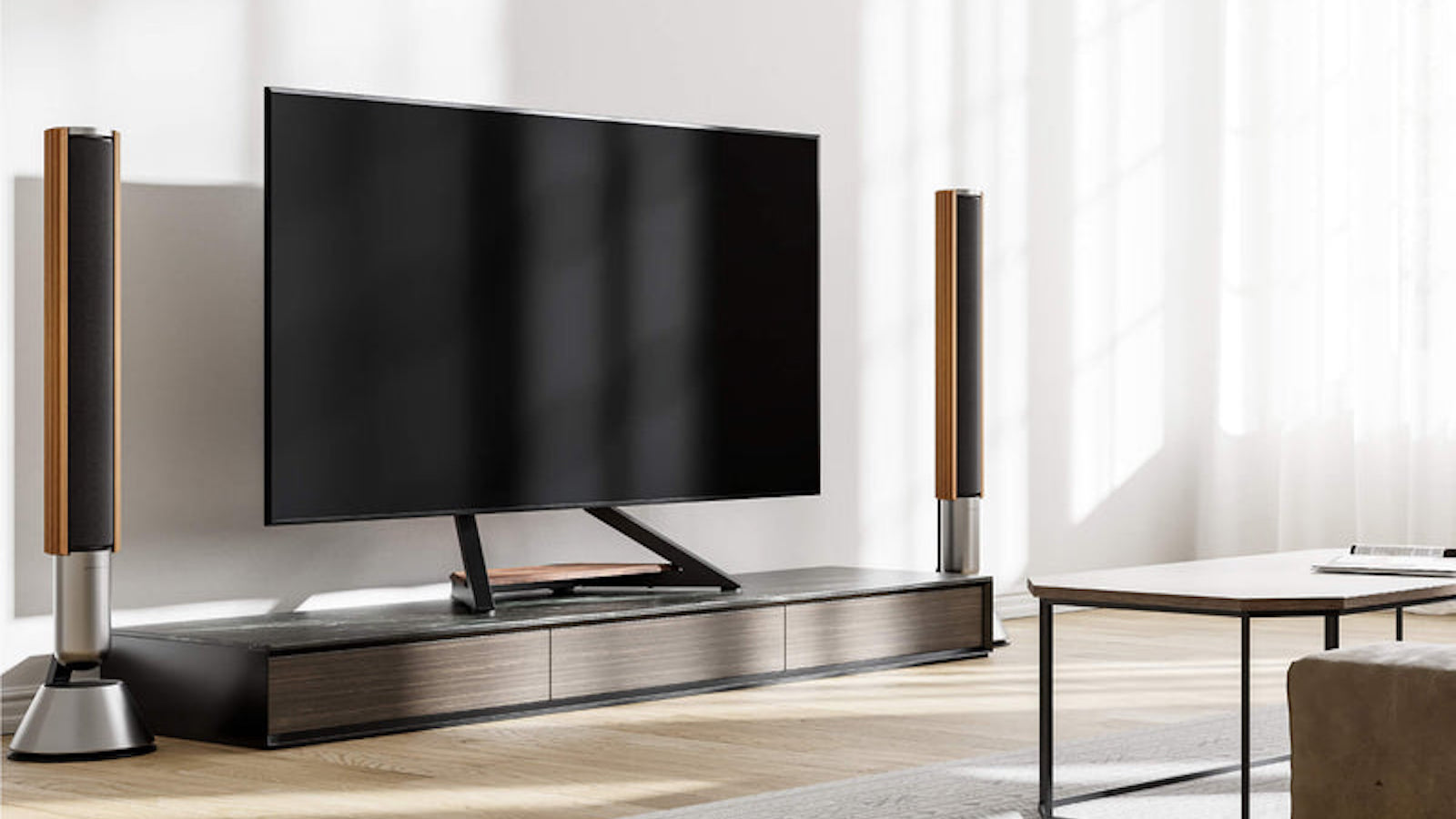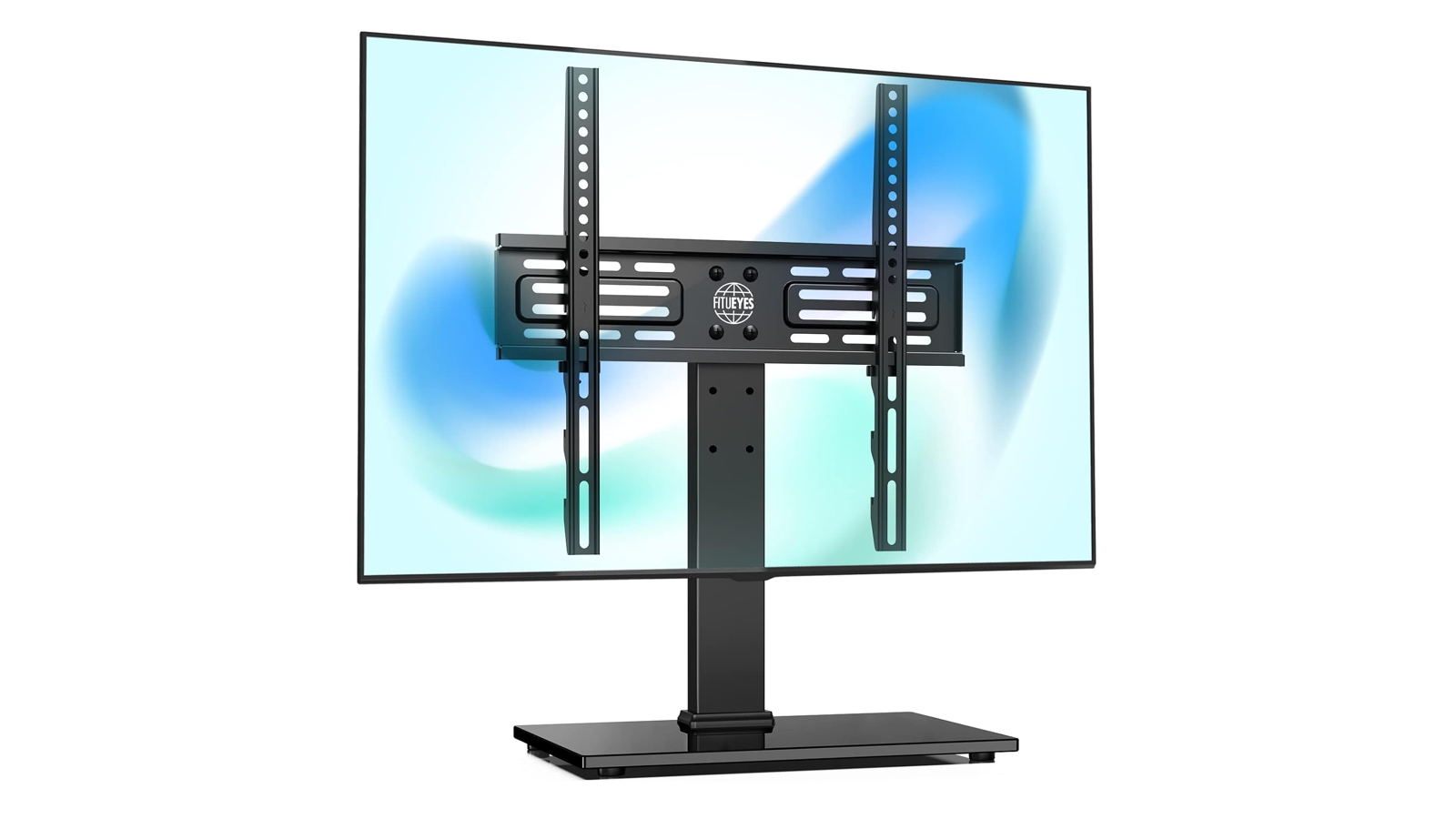
If your first thought when reading the headline above was ‘well, duh’, this piece isn’t for you. Instead, it’s for the surprisingly large number of people who appear to be completely unaware that universal third-party TV stands are even a thing, and that they can change their TV’s original stand for one they prefer with only a small amount of effort and money.
I’ve been made vaguely aware of the general lack of awareness of third-party TV stands when talking to people about LG’s G-series OLED TVs, which don’t come with a stand. Potential buyers would tell me they were put off by the prospect of having to pay through the nose for the overpriced optional stand. When I pointed out that for about £30 (around $40 / AU$60) they could buy any number of alternative stands that would work just fine, they were shocked (and thrilled – I’m sure this additional nugget of knowledge sold a fair few LG G1, G2 and G3 TVs).
Twice in the last couple of months, I’ve also had people moan to me about the design of their TV’s stand. The first because it was too wide for the unit upon which they wanted to place the TV, the second because it didn’t swivel, which meant he couldn’t aim the TV directly at his favoured seat in the living room. Both were blown away when I pointed out that they could simply change the stand.
I’ve done the same thing myself, multiple times, most recently because my Philips OLED807's original stand didn’t allow enough room for the neat nestling of a soundbar. A problem that was quickly solved through a swap to a third-party stand with adjustable height.
How to find the right replacement TV stand

So, if you do want a different stand for your TV, what do you need to look for? It’s dead easy: just type ‘universal TV stand’ into the search bar of your preferred online retailer and you’ll be presented with umpteen options.
These all work by being bolted to the VESA mounting points that you find on the rear of pretty much any TV and that are ordinarily used for wall mounts – they’re the four evenly-spaced holes with threads inside.
These VESA mounting points vary somewhat from TV to TV in terms of the size and depth of the holes and the distances between them, but most universal TV stands come with a selection of bolts to serve most models. As long as you buy a stand that’s intended for use with a TV that is the size and weight of yours, you should be fine.
To be extra sure the stand you’re looking at will be correct for your TV, check your TV’s VESA pattern is listed in the stand’s compatibility list. To work out your TV’s VESA pattern, simply measure the distance between the left and right pairs of VESA mounting points on the back of your TV, and then the top and bottom pair – all in millimetres.
You should have two nice, round numbers, such as 300 x 200mm. That’s the VESA pattern. As long as it’s among those listed on the stand’s product page and your TV is within its weight limits, you’re all set.
For what it’s worth, it was the Fitueyes TT103702GB from Amazon that I personally bought for my 48-inch OLED TV. I can’t say whether it’s the best available as I’ve personally tested very few, but it was easy to put together and has given me no cause for complaint – and I’ve had nothing but positive feedback from those to whom I’ve since recommended it.
And yes, it swivels.
MORE:
These are the best TVs you can buy right now
My ideal TV has no tuner, no speakers and no smart platform
This is how to calculate the right viewing distance for your TV







